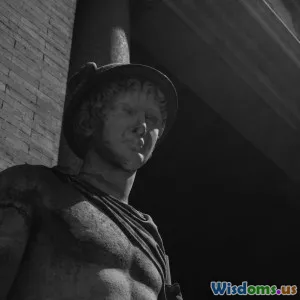
Exploring the Myths of Secret Organizations
6 min read Uncover the truth behind the myths of secret organizations and societies, revealing their influence and role in society. (0 Reviews)
Exploring the Myths of Secret Organizations
Secret organizations and societies have long captivated the public imagination, often portrayed as shadowy groups manipulating world events from the shadows. From the Illuminati to the Freemasons, these organizations are surrounded by a mix of intrigue, suspicion, and myth. In this article, we aim to explore these myths, shedding light on the realities of secret organizations and their role in society.
The Allure of Secrecy
The very nature of secrecy invites speculation and intrigue. People are naturally drawn to what they cannot see or fully understand. This allure is amplified by popular culture—books, movies, and conspiracy theories often depict secret societies as powerful entities wielding control over governments and economies. But how much of this is rooted in reality?
Myth 1: Secret Organizations Control the World
One of the most persistent myths is that secret organizations like the Illuminati orchestrate global events to suit their agendas. While it's true that some organizations operate with discretion, the complexity of global politics and economics makes it unlikely that any single group could exert such control.
For instance, during the Age of Enlightenment, the Illuminati was founded with the intention of promoting rational thought and opposing religious and political oppression. However, it was disbanded in the late 18th century. The idea that it continues to exist and control world events is largely fictional, fueled by dramatic storytelling rather than factual evidence.
Myth 2: Membership is Limited to the Elite
Another common belief is that these organizations are exclusive networks for the wealthy and powerful. While it is true that some organizations have historically favored influential members, many secret societies have opened their doors to a broader membership over time.
For example, the Freemasons, one of the oldest and largest fraternal organizations, welcome members from various socioeconomic backgrounds. Their focus is on moral and ethical development, philanthropy, and community service, rather than elitism.
Myth 3: Initiation Rituals are Sinister
Initiation rituals often create an aura of mystery and fear surrounding secret organizations. Movies frequently depict these rituals as dark and occult, leading to the belief that members engage in sinister practices. In reality, many initiation ceremonies are symbolic and focus on values such as loyalty, commitment, and personal growth.
Organizations like the Odd Fellows and the Elks emphasize community service and fellowship, with initiation rituals that reflect their core values rather than any nefarious intent.
Myth 4: They Are Irrelevant in Today's Society
Some argue that secret organizations are relics of the past, irrelevant in the age of transparency and globalization. However, their influence can still be seen in various sectors, including philanthropy, community service, and social networking. Organizations like the Rotary Club and the Lions Club, while not secret, operate similarly in promoting community engagement and service.
Moreover, the skills and networks developed through participation in these organizations can significantly impact members' personal and professional lives, proving that their relevance persists.
The Reality of Secret Organizations
While many myths surround secret organizations, the truth is often much less dramatic. These groups can serve various purposes, from charitable work to personal development. They can provide a sense of belonging, mentorship, and community for their members.
Historical Significance
Historically, secret organizations have played vital roles in social and political movements. For instance, the Sons of Liberty, a secret society in pre-revolutionary America, was instrumental in opposing British rule. Similarly, the Underground Railroad relied on secretive networks to aid enslaved individuals in their escape to freedom.
Modern Influence
In today's world, many secret organizations focus on philanthropy, networking, and community improvement. Organizations like the Freemasons and Rotary Club contribute millions to charitable causes and foster leadership skills among members. Their commitment to service reflects the positive impact these organizations can have, countering the darker myths perpetuated in popular culture.
Conclusion
The myths surrounding secret organizations often overshadow their real contributions to society. By exploring these myths, we can gain a clearer understanding of the true nature of these groups, recognizing their historical significance and contemporary relevance. As we peel back the layers of secrecy, we find not just conspiracies but also communities dedicated to service, growth, and support. Understanding these realities allows us to appreciate the complexities of these organizations beyond the sensationalized portrayals we often encounter.
Rate the Post
User Reviews
Popular Posts





















